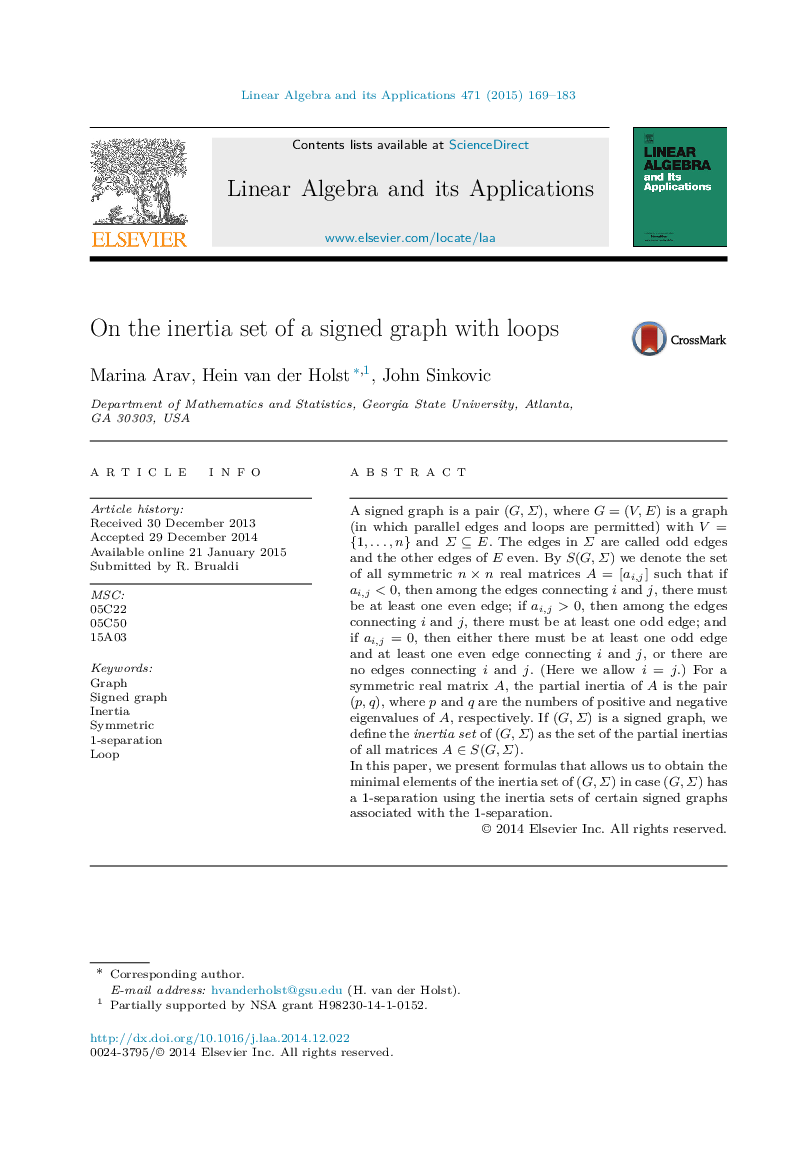| Article ID | Journal | Published Year | Pages | File Type |
|---|---|---|---|---|
| 4599136 | Linear Algebra and its Applications | 2015 | 15 Pages |
A signed graph is a pair (G,Σ)(G,Σ), where G=(V,E)G=(V,E) is a graph (in which parallel edges and loops are permitted) with V={1,…,n}V={1,…,n} and Σ⊆EΣ⊆E. The edges in Σ are called odd edges and the other edges of E even. By S(G,Σ)S(G,Σ) we denote the set of all symmetric n×nn×n real matrices A=[ai,j]A=[ai,j] such that if ai,j<0ai,j<0, then among the edges connecting i and j , there must be at least one even edge; if ai,j>0ai,j>0, then among the edges connecting i and j , there must be at least one odd edge; and if ai,j=0ai,j=0, then either there must be at least one odd edge and at least one even edge connecting i and j, or there are no edges connecting i and j . (Here we allow i=ji=j.) For a symmetric real matrix A, the partial inertia of A is the pair (p,q)(p,q), where p and q are the numbers of positive and negative eigenvalues of A , respectively. If (G,Σ)(G,Σ) is a signed graph, we define the inertia set of (G,Σ)(G,Σ) as the set of the partial inertias of all matrices A∈S(G,Σ)A∈S(G,Σ).In this paper, we present formulas that allows us to obtain the minimal elements of the inertia set of (G,Σ)(G,Σ) in case (G,Σ)(G,Σ) has a 1-separation using the inertia sets of certain signed graphs associated with the 1-separation.
